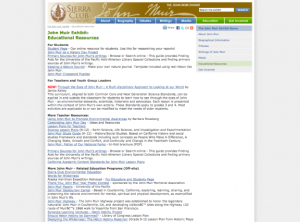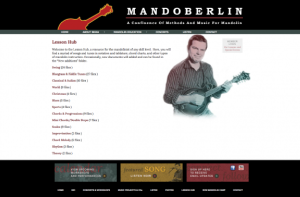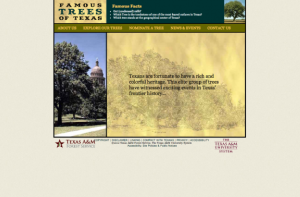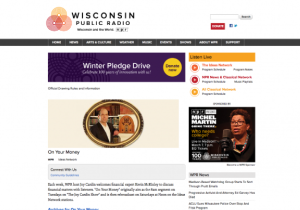Research and Education
Back to Top
|
 |
|
JSTOR Daily: Black History Month: Editor's Picks
|
Social studies |
|
In honor of Black History Month in the United States and Canada, JSTOR Daily has compiled this collection of articles. As of this write-up, the collection includes twenty stories, each of which cites articles from JSTOR's extensive journal database along with other related materials. For example, in Matthew Wills's article on the recent announcement that Harriet Tubman will be featured on the twenty dollar bill, readers will find links to two journal articles. One is a historical piece from the OAH Magazine of History that explores Tubman's life and myriad accomplishments. The other is a 2005 article from the Canadian Art Review that investigates existing portraiture of Tubman. Meanwhile, in More Hidden Figures of NASA History, Shannon Luders-Manuel highlights black individuals who have worked for NASA, including Charles F. Bolden, who headed the administration from 2009 through January 2017. Other articles explore Shirley Chisholm's presidential campaign, the achievements of the Pullman Porter's Union, and the fiction of Toni Morrison. [MMB] |
|





|
|
 |
|
Gateway to Chinese
|
Language Arts |
|
With well over one billion speakers, Mandarin Chinese is the world's most commonly spoken language. On this website from the University of Texas at Austin's Center for Open Educational Resources and Language Learning (COERLL), visitors can learn and practice speaking, listening, and reading Mandarin for free. For example, visitors can click on Pronunciation to visit Pitch Perfect Pinyin, a resource that uses interactive exercises to test users understanding of pronunciation and tone. Learners can also access a number of free, interactive flashcards via the Vocabulary section, or watch videos explaining grammatical concepts (through the center's YouTube page) in the Grammar section. Another highlight of this website is the Chinese Dialogues podcast (available via Listening), where learners can practice listening skills on their mobile devices. Collectively, this website provides a diverse collection of resources to help learners of Mandarin build their skills. [MMB] |
|





|
|
 |
|
Sierra Club: The John Muir Exhibit: Educational Resources
|
Science |
|
The Sierra Club is home to this extensive collection of student and teacher resources about the life and work of John Muir. These resources will be of interest to classroom teachers as well as educators and youth workers in out-of-school environments. K-12 classroom instructors (including elementary school teachers, and upper level science, writing, and social studies teachers) may want to start by exploring the More Teacher Resources sections, which includes lesson plans and classroom activities for a variety of grade levels and subjects, all created by the Sierra Club. External resources and information may be found in the More John Muir-Related Educational Programs section, while the For Students section features a number of resources to aid youth in research projects about Muir's life and work. These resources include articles, timelines, photographs, and links to outside websites. While a few of the hyperlinks on this webpage are no longer up-to-date, the majority of these links work just fine. In addition, most of the resources (with the exception of one curricular packet) are available free of charge. [MMB] |
|





|
|
 |
|
Gods and Scholars
|
Religion |
|
During the nineteenth century, Cornell University was sometimes called the "Godless University." In contrast to most other colleges and universities of the time, Cornell was not affiliated with any church or religious group. The university did, however, collect an impressive archive of materials related to religion throughout the United States and around the world. Today, the Cornell University Library hosts Gods and Scholars, an online exhibition of this diverse archival material. Visitors can browse this collection, which includes religious texts, art, objects, and architecture, by a variety of themes. Texts can be browsed by linguistic region, including East and Central Asia, Near East, and Europe and the Americas. Other categories include The Study and Practice of Religion, Witchcraft and Witch Hunts, and Reformation. Items of note include a complete nineteenth century Quechua prayer book, Aramaic incantation bowls dated from the sixth through ninth centuries CE, and a series of biographical sketches of Martin Luther. Best of all, a well-developed zoom feature lets visitors examine these texts and objects in detail. [MMB] |
|





|
|
 |
|
 |
|
Vectors: Motion and Forces in Two Dimensions
|
Science |
|
From the Physics Classroom, "an online, free to use physics website developed primarily for beginning physics students and their teachers," comes this series of lessons about vectors. These lessons are designed for use as an interactive, multimedia textbook, providing teachers with a useful instructional tool and students with a useful study aid. Divided into three main lessons (Vectors: Fundamentals and Operations, Projectile Motion, and Forces in Two Dimensions), this textbook includes a variety of accessible explanations, real-world examples, helpful diagrams, animations, and practice problems. One especially useful feature of this resource is that the solutions to problem sets are hidden from users until they select a link, allowing students to test their skills and understanding. In addition, embedded hyperlinks let students quickly look up vocabulary terms or concepts as they read or work through a problem. [MMB] |
|





|
|
 |
|
Colorado Agriculture and Rural Life
|
Science |
|
The Colorado Agricultural College (now known as Colorado State University) was founded in 1870 in what was then the Colorado Territory of the United States. Offering academic programs in farming, ranching, and home economics, the college played a key role in the economic, political, and cultural development of Colorado. This trove of primary documents published between 1820 and 1945 was made possible by funding from the United States Agricultural Information Network (USAIN), the National Endowment for the Humanities (NEH), and the National Agricultural Library (NAL) and commemorates the history of agriculture and agricultural education in the Centennial State. There are more than 1,200 items represented here, organized across nine thematic collections. The most substantial collection is Bulletins - Colorado Agricultural Experiment Station, featuring advice on everything from "Cattle Feeding in Colorado" (May, 1896) to "Irrigation waters and their effects" (October, 1903). [CDR] |
|





|
|
 |
|
Mandoberlin: Lesson Hub
|
Arts |
|
From professional mandolinist Brian Oberlin, comes this website dedicated to the stringed instrument heard in numerous classical, traditional, and folk songs. Oberlin teaches a series of mandolin workshops and lessons in his home state of Oregon, but mandolin teachers and students anywhere in the world can download a number of printable resources from this online lesson hub. Here, visitors will find a large variety of sheet music (arranged by themes including Swing, Bluegrass and Fiddle Tunes, and Christmas) along with practice exercises, chord sheets, and more. Visitors may also want to check out the Listen Section, where one can listen to audio clips of several notable mandolin tunes. [MMB] |
|





|
|























